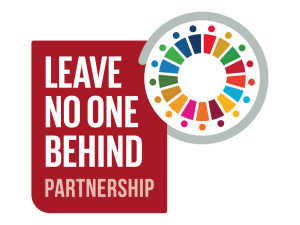The privations of COVID-19 have shifted the issue of inequalities to center stage in political arenas around the world. But a lack of useful data on many forms of inequality is hindering progress – and could mean missing the opportunity to use this newfound political will.
Sometimes we know, but all too often we could know even better.
The pandemic revealed the depth of our ignorance about inequalities and their brutal consequences. A right-wing lawmaker from the party Alternative for Germany, for example, claimed migrants and Muslims were catching the virus more frequently because they were “a group that refuses to follow rules.” While his Bundestag peers were outraged, they had no data with which to smother his incendiary claim.
Studies in the UK and the US have found a correlation between lower social status and the chance of catching COVID-19, usually attributing the link to living conditions, non-socially distanced jobs, and poor health – not ethnicity or religion. But in Germany, comparable data are scant, so risk factors other than age and health conditions remain unclear. Consequently, migrants and other vulnerable groups cannot be sufficiently protected from dangerous populist accusations and myths nor from COVID-19. But problems caused by lack of good data about inequalities go far beyond Germany and the pandemic.
The UN High-level Political Forum on Sustainable Development (HLPF) that just concluded convened a global discussion of progress towards the Sustainable Development Goals (SDGs), including SDG 10, in which governments commit to “reduce inequality within and among countries.” While its targets are ambitious and broad, covering social, political, and economic inequalities, its indicators largely fall back onto economic parameters in the form of national averages. These measures of progress do not depict the complexity of inequalities and are insufficiently granular. To realize the 2030 Agenda’s aim “to leave no one behind,” the UN needs additional data disaggregated by age, gender, and other factors.
Take SDG target 10.2, the “social, economic and political inclusion of all.” How can this complex target be measured simply by looking at the “proportion of people living below 50 per cent of median income”, even if here, at least, the data is meant to be disaggregated by age, sex and persons with disabilities? What about social and political indicators? What about other groups? The lack of meaningful indicators, the data gaps, and the often listless use of existing information can create dangerous myths or conceal societal challenges, and thwart effective policy making – whether one is a German lawmaker or a UN official. Which groups should be prioritized for COVID-19 vaccination? Where do privileges threaten equal democratic participation? Sometimes we know, but all too often we could know even better.
Governments, multilateral organizations, research institutions and civil society groups have a huge role to play in understanding inequalities. In 2020, the World Bank, Oxfam and the Commitment to Equity Institute introduced an indicator to support measurement of SDG 10. It monitors the redistributive effect of fiscal and social policy by comparing pre-tax and post-tax income inequality. The Leave No One Behind partnership of 12 international civil society organizations, supported by the Robert Bosch Stiftung, gathers disaggregated data on progress made on SDG targets, e.g. among groups like sex workers and street vendors, and collects feedback on related programs, like cash or food assistance. The data does not treat these as homogenous groups but allows intersectional analyses, for example about ethnicity or HIV/AIDS or both.
New methods for collecting data can empower citizens and communities and even provide insights in real time. The Leave No One Behind Partnership collects community-driven or citizen-generated data and gives survey groups a role in the entire process of data generation, from defining needs to interpreting results. In Bangladesh, for example, persons with disabilities have designed scorecards for health services, which they fill in regularly and collaborate with local and national authorities about how the data are used.
New ways to access existing data also need to be used to the fullest possible extent. Many national statistics offices have already become more transparent about the data they have and provide them in a workable format. The UK Office for National Statistics, for example, has adopted an Inclusive Data Charter and pledges to collect data that “accurately describe all populations” and to make them available “to all.” Of course, accessibility also depends on users’ data-handling competence. Ironically, data about such competency are scarce, but a 2019 study by Qlik and Accenture said 74% of surveyed professionals felt overwhelmed when working with data. We must begin to change this: high data quality and data literacy are key to holding governments accountable.
The rightwing German lawmaker might have remained silent had he known what researchers brought to light a few weeks after his remarks – a higher correlation between COVID-19 infections and votes for his party in the 2017 general election, than between infections and the proportion of Muslims, according to a study of different neighborhoods in the city of Cologne.
Data are a powerful tool in public debate and political decision-making. If we are serious about realizing the SDGs and fighting the threat of inequalities to social cohesion, economic development, and peace, we need to work with more granular, more complex data. So, let’s start collecting it.
This article is published simultaneously on voicescount.org and the Global SDG Knowledge Hub of IISD.









